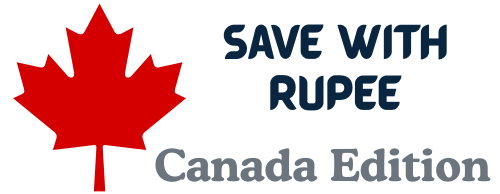Discover how much emergency fund Canadians should have in 2025. Learn how to calculate your ideal savings, why it matters, and smart strategies to build and maintain your financial safety net.
Emergency Fund: How Much Do Canadians Need?
Answer Box:
An emergency fund is a vital financial safety net designed to cover unexpected expenses or income loss. Most experts recommend Canadians save three to six months’ worth of necessary living expenses to protect against financial shocks and avoid debt.

What Is an Emergency Fund?
An emergency fund is money you set aside in a separate, easily accessible account for unforeseen events such as:
- Job loss or income reduction
- Unexpected medical or dental bills
- Car or home repairs
- Emergency travel or family needs
- Other urgent and unplanned expenses
Its purpose is to prevent financial distress by allowing you to cover costs without relying on high-interest debt like credit cards or payday loans.
How Much Should Canadians Save?
The common guideline is to accumulate enough to cover 3 to 6 months of necessary living expenses. What counts as “necessary” includes:
- Rent or mortgage payments
- Utilities (electricity, water, heating)
- Groceries and household essentials
- Insurance premiums
- Essential transportation (fuel, public transit)
- Minimum payments on debts (loans, credit cards)
- Phone and internet bills
Example:
If your monthly essentials total $3,500, your target emergency fund would be between $10,500 and $21,000.
Factors Influencing Your Fund Size
| Factor | Impact on Fund Size |
|---|---|
| Job Stability | More job uncertainty → Larger fund needed |
| Family Size | More dependents → Higher expenses to cover |
| Debt Obligations | High monthly debt payments increase fund requirements |
| Income Volatility | Freelance or commission-based income → Bigger cushion |
| Access to Other Support | Family help or social programs may reduce required amount |
| Geographic Location | Higher living costs in cities like Toronto and Vancouver |
Where to Keep Your Emergency Fund
- Must be liquid and easily accessible
- Best kept separate from spending accounts to avoid temptation
- High-Interest Savings Accounts (HISA) provide interest income while allowing quick access
- Avoid investment accounts with market risk (stocks, mutual funds) for this fund
Steps to Build Your Emergency Fund
- Calculate Your Monthly Essentials: Gather recent bills and expenses to establish your baseline.
- Set a Clear Goal: Choose a target amount (3-6 months based on your situation).
- Open a Dedicated Savings Account: Preferably a high-yield savings account with no monthly fees.
- Automate Savings: Set up automatic transfers each payday.
- Start Small & Build Gradually: Even $25-50/month adds up over time.
- Boost with Windfalls: Allocate tax refunds, bonuses, or gifts to your fund.
- Don’t Touch It Unless it’s an Emergency: Use credit cards or loans only if absolutely necessary.
Real-Life Story: Matt’s Emergency Fund Journey
Matt, a single dad from Montreal, struggled initially to build savings due to high childcare and rent costs. He aimed for a 6-month emergency fund but started with small monthly automations. After two years, he reached his goal and credits his fund for helping cover unexpected car repairs without borrowing. Matt encourages others to have patience and persistence with saving: “An emergency fund gave me peace of mind I never had before.”
How Canadians Use Emergency Funds
A Canadian Financial Consumer Agency survey found:
- 55% of Canadians have an emergency fund covering 3+ months of expenses, down from 64% in 2019.
- Many Canadians would face tough choices if an unexpected $1,000+ expense occurred.
- Emergency fund holders are less likely to rely on credit cards or payday loans during financial crises.
Common Misconceptions
- “I’m young, so I don’t need one.”
Emergencies happen to all ages; young workers often face income volatility. - “I have insurance, so I’m covered.”
Insurance may not cover indirect costs or some emergencies. - “I’ll borrow if needed.”
High-interest borrowing can worsen financial stress and reduce future stability.
Frequently Asked Questions (FAQs)
What if I can’t save 3-6 months right now?
Start with any amount possible and increase gradually. Even some savings are better than none.
Can an emergency fund cover credit card debt?
It should help avoid new credit card debt but isn’t intended for existing high-interest debts.
How often should I reassess my emergency fund needs?
Review annually or after major life changes like marriage, job changes, or relocating.
Are investments suitable for an emergency fund?
No, investments can fluctuate in value; the fund must be liquid and safe.
Should I combine an emergency fund with a rainy-day fund?
Keep emergency funds separate for major unforeseen costs, while a rainy-day fund covers smaller, planned irregular expenses.
Call to Action
Creating a robust emergency fund is one of the smartest financial moves Canadians can make to weather life’s surprises. Calculate your monthly essentials, set a realistic target, automate your savings, and be disciplined in protecting this safety net. It’s your shield against unexpected financial shocks. Start building your emergency fund today and secure a stronger financial future!
This guide is designed for cad.savewithrupee.com to help Canadians understand and build effective emergency funds in 2025.
🍁 Smarter Money Tips for Canada

Discover our guides on credit cards, loans, insurance, and savings designed for Canadian readers.
💡 Explore Canadian Guide